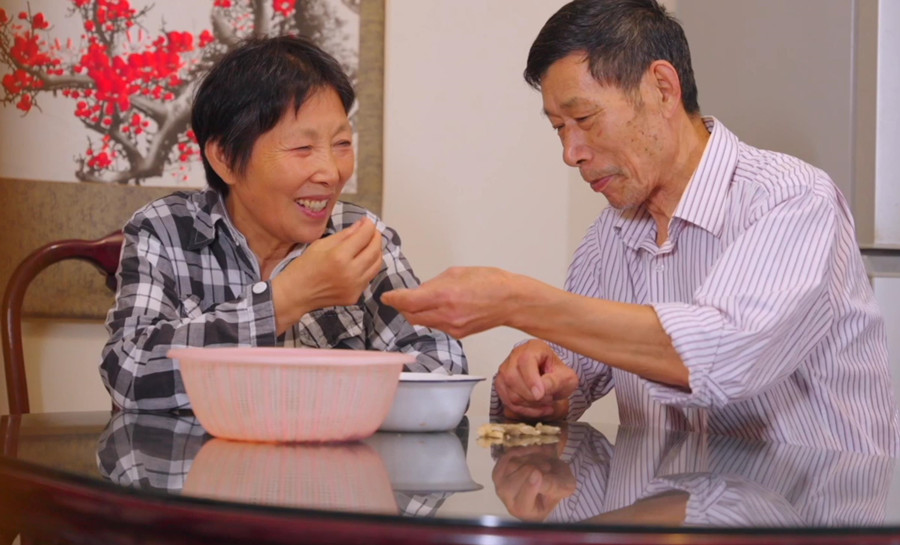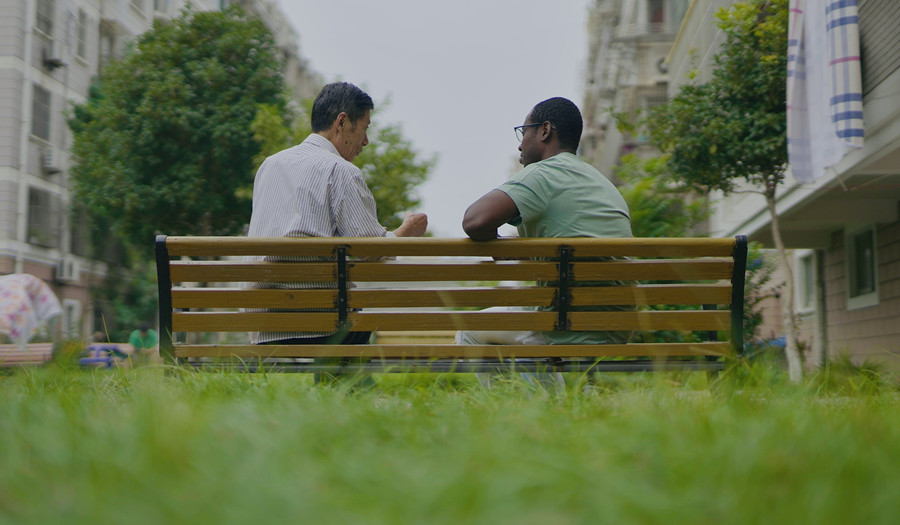Elderly-friendly housing integrates physical and psychological care
Rugao, a small city on the north of the Yangtze River, is renowned in China and the world for the longevity of its residents. In this county-level city with a population of 1.2 million, more than 67,000 people are over 80 years old.
The city’s Wudingyuan community is a role model in providing elderly care services. In September, American architect Adam Brillhart and Ntangu Eliezer, a PhD student at the School of Architecture, Southeast University, visited Wudingyuan to study elderly-friendly renovation efforts and what makes China’s elderly care special.
Located in a bustling area of downtown Rugao, Wudingyuan was built around the year of 2000 and residents here are generally at old age, including Yin Furu in his seventies.

More than ten years ago, Yin's wife Zhang Yelan suddenly got a connective tissue disease and was in pain all day, unable to hold chopsticks. After getting up in the morning, Yin helped his wife with everything such as dressing and eating. Elderly care became a big challenge for the family even before Yin turned to 70. "Before the renovation, the roads were full of potholes in Wudingyuan. There were no separate drains for rainwater and sewers, and no handrails in the building. Some older neighbors moved out," said Yin. After Zhang’s health condition became stabile, Yin wondered how to take care of themselves when both have difficulties in walking. He thought of the city’s nursing home, but neither he nor his wife wants to leave the living environment.
As elderly care was at the forefront of Yin’s mind, the city of Rugao was also carrying out a new program. Wudingyuan was designated as a pilot community to undertake elderly-friendly renovations in the province-wide campaign in 2018, which aimed to make the environment more livable. The program saw the transformation of Wudingyuan from a basic area for living to a community able to provide elderly care services to those in need.
"Older people fear for falling mostly. The community has installed safety aids such as the bathtub handrail and an emergency bell. There are handrails in the corridor in each building and folding chairs available for the elderly to rest, so we are no longer afraid of going downstairs,” said Zhang.

The neighborhood environment is also important to residents’ daily life. Wudingyuan now has an activity room for the seniors, which includes a library and zones for playing cards or chess. Yin often visits here to play chess.
A health service center has also been set up in the community. It keeps a health record of every elderly person, makes frequent visits to those with chronic illnesses, and offers suggestions on medication and life habits.
On one evening in late September, Yin’s daughter Yin Weili started to make soup for her parents after work, this time the delectable white fungus and lotus seeds soup. As usual, she then brought the soup to her parents in Wudingyuan and also carried some vegetables for them.

“Wudingyuan has made my mother and father feel safe. They are not worried about elderly care anymore. They have decided not to live with my family,” said the daughter.
Adam said that American seniors prefer to "age together" in large, centralized retirement villages, often having their own life and social network independent of their children. Most elderly people in China prefer to keep a “bowl of soup” distance from their children, which literally means a distance not too far to make the soup cold in delivery. In this way, they do not have to leave their familiar environment and also maintain a distance from their children's lives, making it easier for the young people to take care of them too. A Chinese saying goes that “an old person is a treasure to the family.” At the later stage of life, all people want to be treated with respect. With a “bowl of soup” distance kept, the way of elderly care in such communities shows the appreciation for the seniors.
Contact us at english@jschina.com.cn